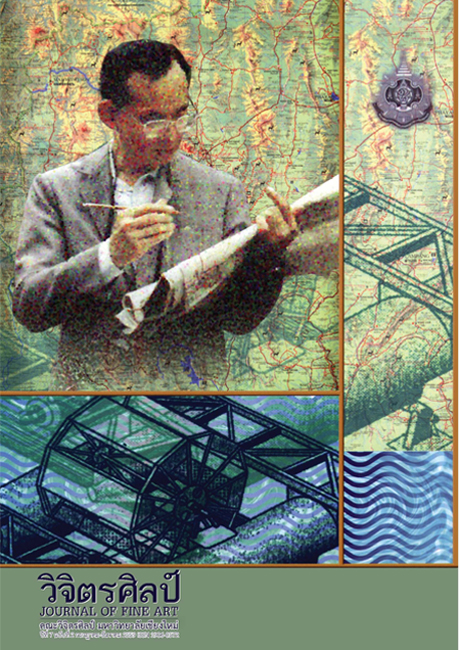การศึกษาความสัมพันธ์ระหว่างการสร้างสรรค์ศิลปะและพิพิธภัณฑ์ศิลปะร่วมสมัยในประเทศญี่ปุ่น
Main Article Content
Abstract
พิพิธภัณฑ์ศิลปะในประเทศญี่ปุ่นเป็นหนึ่งในสถาบันทางการศึกษาที่สำคัญที่สุดมาตั้งแต่ปลายศตวรรษที่ 19 จากจุดมุ่งหมายเริ่มแรกของการเก็บรักษามรดกทางวัฒนธรรมมาเป็นการสะสมงานศิลปะทั้งของตะวันตกและญี่ปุ่นเอง การก่อสร้างพิพิธภัณฑ์ศิลปะรุ่งเรืองมากในช่วงทศวรรษที่ 1970 - 1980 ต่อมาในช่วงทศวรรษที่ 1990 เศรษฐกิจที่ถดถอยทำให้พิพิธภัณฑ์ศิลปะบางแห่งมีผู้เข้าชมไม่เพียงพอ และบางแห่งต้องปิดตัวลง อีกเหตุผลหนึ่งที่สำคัญคือศิลปะร่วมสมัยมีรูปลักษณ์และความหมายที่เปลี่ยนแปลงไป ศิลปินเองก็ใช้สื่อหลากหลายแทบไม่มีข้อจำกัด เมื่อรวมกับศิลปะแบบมาตรฐานที่ก็ยังคงมีกิจกรรมการจัดแสดงอยู่ เงื่อนไขเหล่านี้ทำให้พิพิธภัณฑ์ศิลปะต้องเปลี่ยนแปลงตามไปด้วย พิพิธภัณฑ์ศิลปะที่สร้างขึ้นตั้งแต่ทศวรรษที่ 1990 เป็นต้นมาปรับตัวให้ขนาดลดลง สถาปัตยกรรมก็ถูกปรับให้รองรับและมีส่วนร่วมกันกับงานศิลปะ บางกรณีมีความสัมพันธ์กับคน วัฒนธรรมและประวัติศาสตร์ของท้องถิ่นที่อาคารตั้งอยู่มากขึ้นโดยได้รับผลกระทบดังกล่าว งานวิจัยนี้พบว่าพิพิธภัณฑ์ศิลปะเปลี่ยนจากการเป็นพื้นที่ “ลูกบาศก์ขาว” ติดตั้งงานศิลปะอย่างเงียบๆ กลายเป็นมีความสัมพันธ์โดยตรงกับการแสดงออกของศิลปะและการชมศิลปะด้วย ตัวอย่างของพิพิธภัณฑ์ศิลปะและงานศิลปะที่ทั้งรูปทรงความหมายและการชมแยกจากกันไม่ออกเป็นสิ่งที่พบได้ในญี่ปุ่นปัจจุบัน
A Study on the Relationship Between Contemporary Art and Art Museums in Japan
Art Museum is one of the most important educational institutions that Japan has been supporting since the end of the 19th century and after world war II. From the initial purpose of conserving a cultural heritage to the building of art collections both Japanese and western art. The country’s economy flourishing in the 1970-1980s resulted in the construction of art museums in almost every main prefecture in the country. The recessional economy later, on the contrary, effected fiercely to these museums. Some of them were not able to attracted enough viewers, some of them have to closed down due to the budget cut. From the fact that contemporary artists interpreting arts and using new mediums to express art ideas which seems to have no limitations and the new concepts of art exhibition, museums built after 1990s thus adapted their size to smaller, their architecture to serve and cooperative more to art works and most of all these museums always created various kinds of relationship to peoples, culture and history of the places where the museums stand. Inevitably effected from the situations above, this research found that art museums in Japan changed accordingly. From a “white cube” neutral space that quietly supporting art, the contemporary art museums has a direct involvement with art expression and art experience. Art and art museum that becomes entirely inseparable entity among examples can be seen today.


